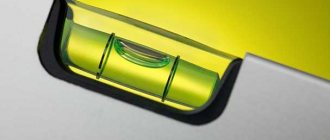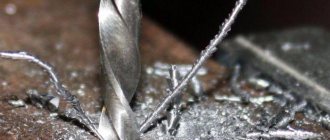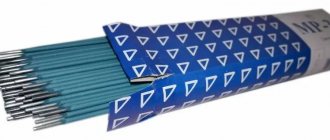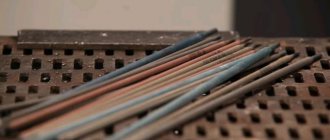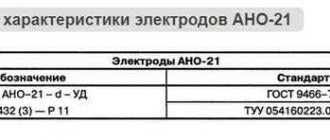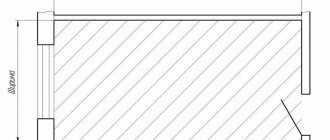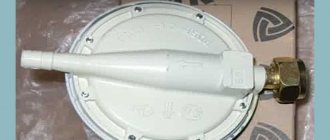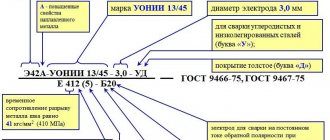To prepare correct estimates in construction and in the production of products, specialized calculation methods are used. Having determined the consumption of electrodes per 1 ton of metal structures, you can prepare a financing plan and organize a timely supply of materials. This type of training is used when performing large-scale work. There is no practical sense in using this technique to create multiple connections and solve everyday problems using welding.
The consumption of electrodes during welding depends on many factors.
Theory and practice of calculation
The difference in theory and practice largely depends on the conditions in which the welding will be performed, as well as on the skill of the welder, which is determined by the discharge. Read about what the categories of welders are and what they are in our article at the link.
If the process takes place in the wind or in uncomfortable conditions (in cramped spaces where there is no normal access), the welder will burn more electrodes. Therefore, the welding conditions must be taken into account when calculating.
If you are guided by VSN, then you can use the calculation method based on the loss coefficient. Its formula is as follows:
G=m * K.
K is the loss coefficient used for various brands, which we listed above in the table (range 1.5 -1.9).
M is the mass of the deposited metal. This value is calculated by multiplying the cross-sectional area of the deposited metal by its density (m = p*F).
As a result, we obtain the following formula for calculating losses per 1 m of seam:
H= P * F * K.
If you need to determine losses for a specific length, in this case the formula looks like:
H= P * F * K * L.
where L is the length value. In some sources, the formula has a different form:
H=G*L
where G= K * m - it is called the specific consumption rate;
L is still the same value of the seam length.
Calculation of losses in practice is determined not by formulas, but experimentally.
To do this, the electrodes are first weighed. Next, two welders weld joints of the same type (the same thickness, diameter and edge preparation) that will be performed during the work.
As a result, control weighing of the remaining welding materials is carried out and the results obtained are compared with the values of the theoretical calculation. This is where the practical consumption coefficient comes from.
Consumption pr./Exp. theory = Coef. consumables etc.
Next, when ordering materials, the values obtained from theoretical calculations are multiplied by the practical consumption coefficient.
Example: if during the calculation we received a value of 10 kg, and the consumption coefficient. etc. is 1.42, then to obtain practical consumption:
10 kg*1.42 = 14.2 kg. Thus we get real losses.
What does it depend on?
Costs for electrodes, welding wire, etc. used when connecting structural elements, electrical energy consumption is mainly affected by the cross-section of the weld.
In turn, this indicator depends on exactly how the welding is performed, how thick the metal is, and the quality of preparation of the parts.
Important! Even slight moistening of the electrodes sharply increases consumption, reduces the quality of the seam, and makes work more difficult. Store materials exclusively in a dry place, in packaging that prevents the ingress of water.
As a rule, the main characteristic - the leg of the seam, on which its cross-section depends, is determined by the project. From here the required diameter of the welding material, the strength of the welding current, etc. are determined.
If we carefully examine the electric welding process, we will be convinced that not all of the introduced metal is used. Some of it is evaporated by the arc flame, some is sprayed with familiar welding sparks.
A certain amount of metal is bound in the slag covering the seam, formed by molten coating and oxides. These losses are defined by the word “waste” .
Finally, the process technology itself involves holding the electrode. Accordingly, part of it remains unused. Such a piece is technically called a “cinder”; its length is about 50 mm . Part of these costs depends on the location and length of the seam. Losses are also higher when you have to weld many separate sections, for example, when welding reinforcement, than one long seam.
This is interesting: Semi-automatic welding without gas using ordinary wire - process technology
Error
Even the use of data obtained practically does not guarantee that losses will not increase. Often, when performing work on site, there may be wind, power surges, and materials may not be completely dried and many other factors that will affect overruns.
Also, during operation, defective electrodes may be identified: rusty, with chipped or swollen coating. They will not be able to be used.
Khafizov Ildar
Level IV NAKS specialist
Ask a Question
Based on practical experience, when ordering electrodes, I recommend adding an additional 3 to 5% to ensure process continuity. Because delivery of materials in case of shortage requires much higher costs.
To avoid problems with a large number of defective materials when purchasing, you need to open one pack from the batch and weld test samples. This can determine the quality of the electrodes and their suitability.
This can significantly save the budget if a large amount of materials is purchased (more than 1 ton).
Wire Features
Wire consumption is influenced by many factors , including the human factor in the context of whether the welder has the required qualifications. However, the most objective is the value of the deposition coefficient .
Stainless steel welding wire Alfa Global ER 347Si. Photo Welding Technologies
This indicator determines the amount of deposited metal per unit of time at a current of one ampere. The value of the coefficient is influenced by the composition of the wire material, the organization of protection of the welding zone (gases, flux), as well as the type of current (alternating, direct) and its polarity. The value of the deposition coefficient, depending on the type of wire and the method of conducting the technological process, can vary from 5-7 to 18-20 g/A*h . There are several types of wires: titanium, copper, alloyed, polished, stainless, steel, aluminum, copper-plated, powder. The coefficient is determined mainly experimentally.
Reference. The deposition coefficient, as well as other technical characteristics of popular brands: PANCH-11, SV08G2S, ER70S-6, VT1-ooSv are presented in the relevant articles.
Consumption of electrodes per 1 ton of metal structures
Electrode losses can be calculated based on the mass of metal structures being welded - per ton of metal. This is a fairly rough estimate. It can be used in cases where a large amount of work remains. The result obtained is the upper limit for the consumption of welding materials.
The formula is as follows:
H= 0.011* Mcr.;
H - Required number of electrodes
Microdistrict — Mass of metal structures to be welded.
Calculation of the number of electrodes per 1 meter of seam
To determine material costs per 1 m2, it is best to use the tables that you can find in our article below. The tables already indicate the amount of consumption only for the welding operation. When calculating the total quantity, it is necessary to take into account the loss of materials for making tacks.
To do this you need to use the following formula:
N = Nsv + Np.
where H is the required amount of electrode metal that will be required for welding 1 m long.
NSV - consumption for a welding operation - value from the table;
Np - Cost of tack welding.
The value of Np is calculated using the formula:
Нп = 0.15*Нсв
For thickness of welded parts less than 12 mm.
If the thickness is more than 12 mm, then the formula looks like:
Нп = 0.12*Нсв
For the convenience of calculating the consumption of electrodes per 1 m of seam, use calculators made by our specialists. You can download them to your computer or open them online.
For calculations when welding pipes
Calculator
For calculations when welding sheets and profile structures
Calculator
Useful article - Which electrodes to cook stainless steel with?
Correction factors
For more accurate calculations, correction factors are used. Their complete list can be found in VSN 452-84. Here are examples of amendments depending on work tasks:
• When welding rotary joints
| Welding type | Electrode type | Coefficient |
| MMA welding | for coated electrodes | 0,826 |
| TIG welding | for consumable electrode | 0,930 |
| for tungsten electrode non-consumable | 1 |
• When welding pipes located at an angle to the main axis of the pipe (by default, the angle is taken to be 90°)
| Connection angle | Coefficient |
| 60° | 1,1 |
| 45° | 1,23 |
• When the pipes are positioned on the side or below in relation to the main pipe
Piece consumption of electrodes
If you need to calculate the quantity consumption in pieces, this can be done using the following formula:
N=H/Mel,
where N is the total flow rate in kg;
Mel is the mass of one electrode (taken from the table below).
Table - Weight 1 pc. - (Mel)
| Diameter, mm | Weight, kg |
| 2,5 | 0,02 |
| 3,0 | 0,032 |
| 4,0 | 0,053 |
| 5,0 | 0,083 |
H - taken from the table (or calculated using the formulas described above), taking into account the length of the seam. Since the data in the tables is given for 1 meter of welding seam.
Calculation example: if parts to be welded with a thickness of 3 mm with a C17 groove are welded in a vertical position with 2.5 mm electrodes, then the H value according to the table per 1 m of weld is 0.211 kg. If you need to weld 2 m of a seam, then H = 2 * 0.211 = 0.422 kg.
In this case, the calculation of the electrodes will be as follows: N=0.422/0.02=22 pcs.;
Useful article - How to cook stainless steel with an electrode
Calculation of consumption when welding pipes
If you are welding pipes and need to calculate the consumption of electrodes during welding, you can use the following methods:
- Use our calculator.
- Find data in the tables from VSN 416-81 and VSN 452-84, which already show the consumption rate of electrodes per 1 joint.
In cases where the required pipe size is not in the VSN tables, you can use the following formula:
Nt=N*lseam
where N is the consumption per 1 required cutting (data are given in the table below)
lseam - length of the seam, it is calculated using the formula for circumference - lseam = Dtr * 3.14
| C2 | |
| Thickness of parts, mm | N, kg/1 meter of pipe seam |
| 3 | 0,119 |
| 4 | 0,162 |
| 5 | 0,183 |
| C17 | C19 | ||
| Thickness of parts, mm | N, kg/1 meter of pipe seam | Thickness of parts, mm | N, kg/1 meter of pipe seam |
| 4 | 0,382 | 3 | 0,415 |
| 5 | 0,513 | 4 | 0,535 |
| 6 | 0,665 | 5 | 0,679 |
| 7 | 0,834 | 6 | 0,955 |
| 8 | 1,099 | 8 | 1,378 |
| 10 | 1,676 | 10 | 2,004 |
| 12 | 2,18 | 12 | 2,571 |
| 14 | 2,785 | 15 | 4,137 |
| 16 | 3,486 | 16 | 4,534 |
| 18 | 4,157 | 18 | 5,378 |
| U18 | U19 | ||
| Thickness of parts, mm | N, kg/1 meter of pipe seam | Thickness of parts, mm | N, kg/1 meter of pipe seam |
| 6 | 0,511 | 6 | 0,799 |
| 8 | 0,862 | 8 | 1,183 |
| 10 | 1,301 | 10 | 1,584 |
| 12 | 1,831 | 12 | 2,484 |
| 14 | 2,45 | 14 | 3,123 |
| 16 | 3,157 | 16 | 3,769 |
| 18 | 3,956 | 18 | 4,372 |
| 20 | 4,843 | 20 | 4,833 |
| U5 | ||
| Thickness of parts, mm | N, kg/1 meter of pipe seam - up to. Ø194 | N, kg/1 meter of pipe seam - St. Ø194 |
| 6 | 0,643 | 0,672 |
| 7 | 0,78 | 0,813 |
| 8 | 0,933 | 0,969 |
| 10 | 1,289 | 1,333 |
| 12 | 1,707 | 1,76 |
| 14 | 2,19 | 2,249 |
| 16 | 2,737 | 2,805 |
| 18 | 3,349 | 3,424 |
| 20 | 4,024 | 4,107 |
Calculation example: For a pipe with a diameter of 89x7, cutting C17, fixed joint. From the table given above for cutting C17 when welding in the ceiling position, we select the corresponding flow rate value N - 0.834. Next, we calculate Nt = 0.089 * 3.14 * 0.834 = 0.233 kg per 1 joint.
Examples of formulas used
Other methods can be used for calculations.
If there is no reference data on the weight of the deposited metal, use the formula Vnm = p*S, where:
- p – specific density (7,850 kg/cubic m for carbon steel grades);
- S is the cross-sectional area that is formed when the technological process standards are observed.
The S value is taken from the table or calculated independently.
For the example discussed above, the formula S=t*z+0.75*w*h is suitable, where:
- t – thickness of parts;
- z – gap;
- w (h) – width (height) of the overlap above the joint.
Consumption coefficients by electrode type are given above for a length of 450 mm.
Different methods are used for calculations.
For other values of this parameter, the following corrections (multipliers) are applied:
- 250 mm – 1.12;
- 300 mm – 1.07;
- 350 mm – 1.04;
- 400 mm – 1.02.
When creating connections using a protective environment, the following correction factors are used:
- 1.05 – carbon dioxide (welding thick steel sheets);
- 1.15 – use of automatic and semi-automatic material feeders (CO²);
- 1.7 – creating seams with wire filled with powder filler.
Using the formula Hg=Py*L+P, the standard consumption of inert gases is determined to create a reliable protective environment. Here:
- Ru – specific norm per meter of length (L) of a welded joint;
- Рд – consumption for additional and auxiliary operations (purging, mode setting).
We recommend reading: The main features and nuances of using electrodes of the E50A type
To calculate the specific value, multiply the optimal flow rate according to the rotameter (Рр) by the operating cycle time (T): Ру=Рр*T. If there are no table values, the last parameter is calculated manually using the formula T=(Vnm*60*1000)/(Kn*I), where:
- Kn – deposition coefficient;
- I is the current strength used for welding.
When creating connections, correction factors are used.
Below are the Kn values in g/Ah for different modes:
| I (A) | Wire diameter (mm) | ||
| 1,6 | 2 | 2,5 | |
| 200 | 14,2 | 12,2 | – |
| 300 | 16,5 | 13,5 | 11,1 |
| 400 | 21,1 | 16,8 | 13,9 |
| 500 | 28,3 | 22,3 | 17,8 |
When working with electrodes, use the formula T=60/V, where V is the speed of creating a welded joint. This parameter depends on the complexity of the operations performed and the method used. Structures are manually welded at a speed of up to 15-20 m/h. Using an automatic machine increases V to 100 m/h or more.
The time spent on auxiliary operations according to the standards ranges from 0.05 to 0.2 minutes when working with consumable and non-consumable electrodes, respectively. The calculated flow rate should be adjusted when welding small parts. Performing these and other complex operations increases the consumption of inert gas by 15-20%. When planning deliveries, it should be taken into account that a standard 40-liter cylinder is filled with liquid carbon dioxide (25 kg) when refilling.
Upon transition to a gaseous state, this amount forms 507 liters of a protective inert environment.
Calculation of consumption when welding profiles
When welding a profile such as an I-beam, a channel, a profile pipe, and so on, the same standards are used as for welding sheet metal. Their methodology is given in the section HERE.
An important feature that should be taken into account is the duration of the process. The longer the seams and the longer the welding, the higher the percentage of metal waste, and, accordingly, the higher the losses.
Also, welding of metal structures often occurs at heights, which complicates the work process and increases losses. There is a simple pattern here - the more difficult it is for a welder to work, the more materials and time will be spent.
Calculation methods
The flow rate depends on the input parameters:
- surfacing mass;
- weld length;
- consumption rates.
The weight of the deposit is the weight of the metal that fills the joint. The exact data of this parameter is given in the welding flow chart. Its indicator, according to rough calculations, is from 1 to 1.5% of the weight of the metal structure.
The dimensions of the seam are measured using a tape measure along the joint. The result obtained is multiplied by the total number of seams present in the section. This is due to the fact that deep joints are welded by parallel or sequential application of two or three seams.
The consumption rate is the mass of surfacing per meter of weld. It is calculated both for an individual unit or part, and depending on the type of welding operation performed.
Taking these nuances into account, calculation of the consumption of filler products should be carried out both theoretically and practically.
How to reduce consumption
To reduce losses of welding materials without compromising the quality of the resulting products, the following recommendations can be used:
- When purchasing large quantities, carry out incoming inspection and check the quality of the electrodes. This will identify low-quality materials that will be rejected or only partially used.
- Use semi-automatic and automatic welding methods where possible. When welding in a shielded gas environment, use gas mixtures containing helium and argon to reduce spatter.
- Carry out the process at constant current and use reverse polarity.
- Carry out the process at optimal conditions (without increasing the current strength) to reduce waste.
Write in the comments what you think affects consumption the most.
Ways to save materials
There are several ways to save on consumables. This will reduce the cost of purchasing rods:
- Use automatic and semi-automatic machines. When manual welding, losses of more than 5% may occur. Remember that the higher the quality of consumables and equipment, the more efficient the welding is, which means fewer losses occur.
- Different brands and models of electrodes work with different currents. When setting up the device, pay attention to this. If you select the wrong welding modes, you can suffer large losses.
- Welding technology affects consumption. So, if the rod angle is incorrect, the flow rate may increase.
Experienced welders find out in practice which welding angle is optimal. This enables them to work quickly and economically.
By adhering to such recommendations, choosing the right electrodes and carefully adjusting the equipment, you can significantly save material consumption.
